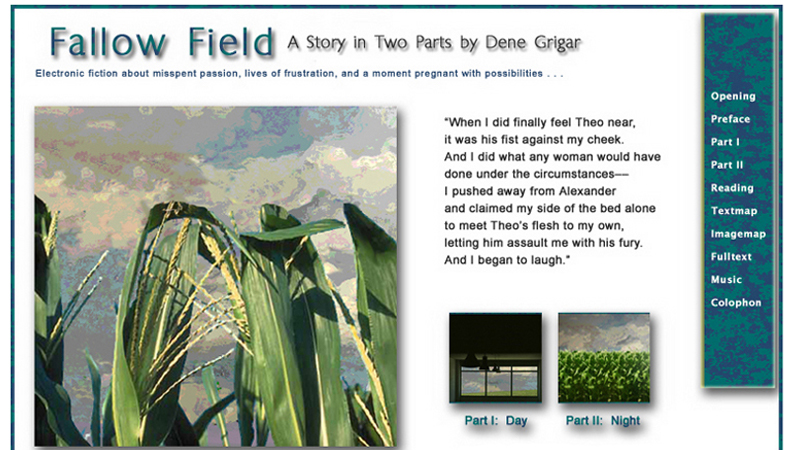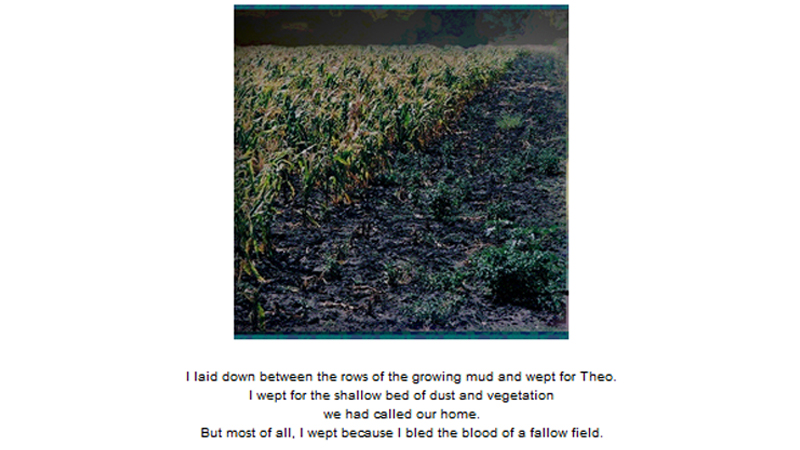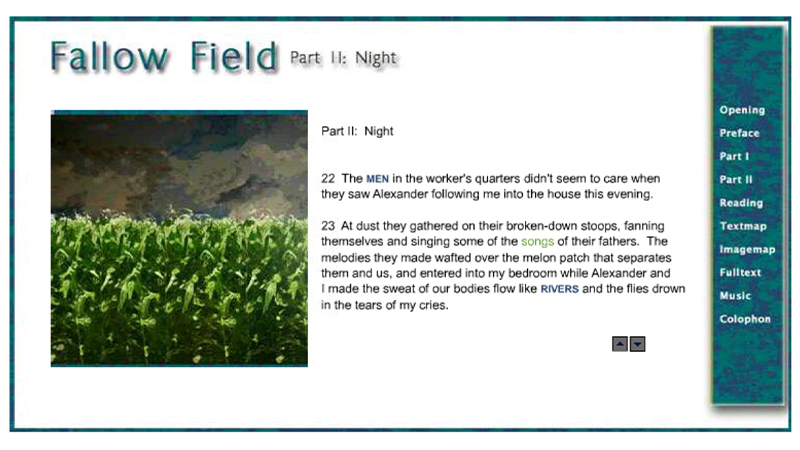"'Fallow Field," a short work of fiction of no more than 30 lexias, chronicles the breakdown of a marriage. Mythic in quality, it is set in no particular place or time and reflects no one culture. It does, however, recall those archetypal power struggles between women and men so familiar in Western tradition, beginning with Hera and Zeus, Helen of Troy and Menelaus, and Klytemnestra and Agamemnon. The older we are, the better we know the compulsion and repulsion of such relationships, feeling both relief and sadness when they end.
The work is essentially an experiment in what Katherine Hayles calls "electronic textuality," yet one that utilizes the "software functionality" (Writing Machines 19-20) of hypertext not for breaking down narrative structure, but for holding the narrative structure more tightly together in a tale that centers on characters whose lives are horribly broken and fragmented. The images and sound brought into the story via the hyperlinks are intended to work in conjunction with the words to provide a larger canvas on which the reader can draw meaning. More specifically, it aims to demonstrate that images and sound are elements as important to any "text" as words can be when that text is electronic.
This particular experiment in electronic textuality also addresses strategies relating to arrangement and structure generally associated with rhetoric that theorists like Gerald Hauser say that attend to "functional uses of discourse to adjust people, objects, events, relations, and thoughts" (Introduction to Rhetorical Theory 33). Put briefly, "Fallow Field" assumes reading to be a "functional" activity intimately connected to "discourse" for a culture like ours so invested in print, and the reading of literature, in particular, to be an experience that can potentially "adjust" readers. Thus, what I have attempted to create is what is called in contemporary rhetorical theory a "readerly text" rather than "writerly text," which does not take into account the reader in its development or presentation."
1 COPY IN THE NEXT
Published in 2004 by The Iowa Review Web in Volume 6.
This copy was given to the Electronic Literature Lab by Lynne Nugent at the Iowa Review in Summer 2016.
PUBLICATION TYPE
Journal
COPY MEDIA FORMAT
Web


